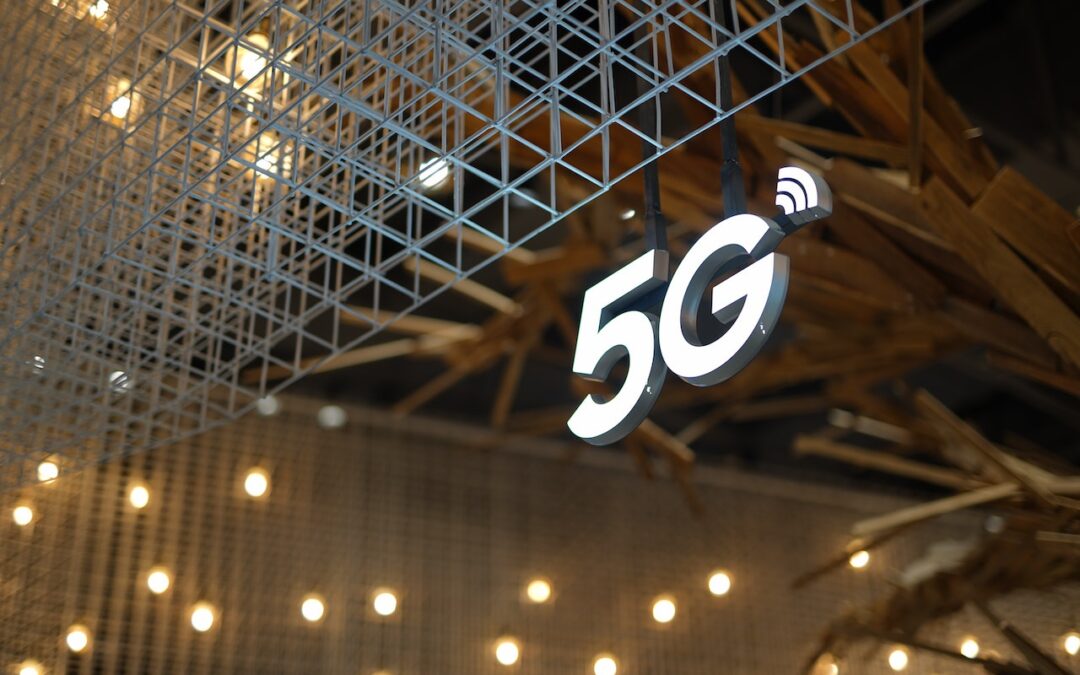5G, or the “Fifth Generation of Telecom Networks,” started being deployed in 2018. The global implementation of 5G has gathered steam ever since; by 2025, one-quarter of the world’s mobile technology will use 5G networks.
In addition to huge improvements in mobile network speed, 5G is driving a vast expansion of the Internet of Things (IoT), the vast array of physical devices, sensors, and objects that can connect to the internet and exchange data. Trade-offs between latency, speed, and cost enable 5G networks to support billions of connected devices, meeting enhanced communication needs.
About 10 to 100 times faster than 4G, 5G’s top speed is a lightning-fast 10 gigabits per second. 5G networks are faster because they run on shorter frequencies. The high-band 5G spectrum provides a significant boost in speed, capacity, and quality, with low latency.
Exact download speeds vary by area, however. According to a report by Fortune Magazine, speed tests conducted in Q3/Q4 2019 measured download speeds of 220 megabytes per second in Las Vegas, compared with more than 950 megabytes per second in Minneapolis.
Still, these significant increases in speed are paving the way for rapid expansion of the IoT, which already has a foothold in modern workplaces and homes. Here is a closer look at five industries that could be revolutionized by the technological innovations that 5G makes possible.
1. Construction
5G has had a considerable impact on the construction industry, as it has unlocked tech solutions that are being adopted by construction companies large and small.
One example: in May 2020, China State Construction Engineering Corp started work on a construction site in the Beijing Economic-Technological Development Area, which is home to a cluster of high-tech factories. The work is supported by 5G-dependent technologies like building information modelling (BIM), cloud computing, blockchain, big data, and AI.
The project relies on extensive real-time monitoring, including mobile occupational health analysis, multi-dimensional security monitoring, and real-time remote supervision. Workers are equipped with 5G-connected AI glasses that track their location and connect with supervisors and engineers located offsite. The glasses allow supervisors to remotely inspect the work from afar.
An AI function also allows remote supervisors to detect if workers are wearing masks, while a health monitoring system uses 10 indicators, such as blood pressure and electrocardiogram data, to ensure each worker is healthy enough to be onsite.
2. Education
The COVID-19 pandemic led to rapid digitalization of numerous fields, perhaps none more so than the education sector. Millions of teachers and students worldwide were suddenly reliant on virtual classrooms as schools and colleges were shuttered to prevent the spread of the virus.
Education technology, or edtech, is predicted to improve significantly as we transition to 5G. The faster data transfers and lower latency enabled by 5G will enhance the user experience of edtech platforms that rely on real-time video streaming and interactive quizzes, tests, learning games, and other instructional tools.
Today, over 4,500 edtech companies support more than 300 million students globally. As networks upgrade to 5G, experts predict a huge uptick in implementation of edtech tools. Ultimately, expanded access to edtech could increase literacy and numeracy rates by making education more accessible to all.
3. Agriculture
5G is a boon to farmers and the agriculture industry as a whole. According to research published by McKinsey & Company, by correctly implementing connectivity infrastructure, an estimated $500 billion in value will be added to the global agriculture industry by 2030. This connected infrastructure includes technologies like connected sensors and analytics to monitor crops, increase yields, and use water and fertilizer more efficiently and sustainably.
Robots and drones are already being deployed on farms to scan fields, taking high resolution images of crops and helping farmers to identify problems early on. This information can prompt farmers to spot nutrient deficiencies in the soil, pests, disease, or faulty equipment. 5G-enabled agritech will allow for faster data transfers, in greater amounts, so farmers can fine-tine their growing techniques—in some cases down to the individual plant—to maximize yields while minimizing costs and environmental damage.
4. Manufacturing
Manufacturing is a critical sector of the global economy. Already, automation, robotics, and machine learning are transforming factories; these technologies are being used to perform tasks that may be dangerous or repetitive for workers, while increasing productivity and cutting costs.
Application of 5G will only accelerate automation in the manufacturing industry. The technology will enable true “smart” factories with predicable production capacity and reliable quality, with real-time links to customer demand forecasts to reduce costs, avoid surpluses or deficits, and enable “just-in-time” manufacturing.
5. Healthcare
In healthcare, the impact of 5G could be game-changing. Fast data transfers can facilitate the development of more personalized and preventative healthcare.
For example, 5G can allow for real-time monitoring and sharing of patients’ vital signs and other indicators, as measured by wearable devices. Sharing this data can help physicians spot problems well before patients come in for check-ups, and help patients better adhere to their prescribed treatment regimens. The mountain of data that these sensors can collect can also help physicians better understand each patient’s specific health risks.
Telehealth, of course, also benefits from 5G. Quality videoconference connections with little lag time are essential for telehealth.

